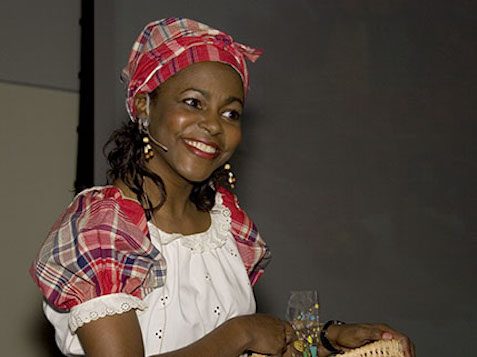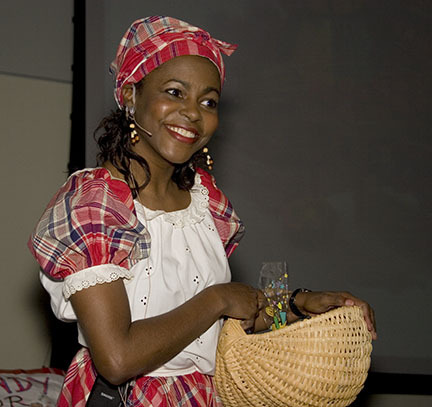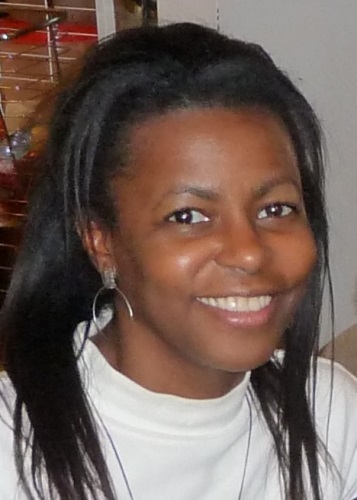
Arlene Laing is a pioneer when it comes to Jamaican internet websites. She created the first Jamaican website online in 1994 and was an inspiration for us starting Jamaicans.com in 1995. Here is our conversation with Arlene.
– Tell us what drove you to create the very first Jamaican website on the Internet?
I have been on the Internet, since 1989. At first, I used email to keep in touch with my brother, a computer scientist in Jamaica who was among the first to have emailed back then, fellow students, professors, and friends around the world. Prior to the “World Wide Web”, I had used “gopher” to browse the Internet and “USENET” to connect with the Caribbean diaspora. Then in early1994, a friend showed me Mosaic, one of the first web browsers, and I immediately realized that the Web was really powerful because of the visualization. After that first view, I was inspired to learn how to build websites. Naturally, I also searched for information about Jamaica and the Caribbean and found two popular Caribbean collection, at MIT (by Geoff Seyon) and University of Illinois (by Ryan Alva Stuart). Neither collection nor anywhere else I searched had much information about Jamaica. So, once I learnt HTML, I started creating what I called “An introduction to Jamaica”. As an avid bookworm, I had a collection of books about Jamaica, which, along with videos and photos, I had used for presentations about Jamaica at Penn State and elsewhere. Following the Jamaica website, I also created the first website for Hampton School and Munro College; in response to my first homepage question “Any other old girls and old boys out there?” That site served to bring together Hamptonians and Munronians from around the world and inspired other Jamaicans to do the same for their schools.
– Did you think you would be a pioneer on the Internet when you were creating the website?
No. By the way, I would call someone like Prof. Robert France, a Jamaican-Guyanese, an Internet pioneer, since he launched “soc.culture.caribbean” on USENET, the first virtual community for Jamaicans and other Caribbean people to talk with each other.

– What was the response to the site?
The site was immediately popular as it seemed that people were thirsty for information about Jamaica. In fact, I got in trouble with my systems administrator at Penn State because our research center web server was overloaded by people hitting my site. I had to email Yahoo, who had the biggest collection of web links at that time, and ask to be removed from their collection. For a while, I set up my own web server (another thing new thing I learnt). People, especially Jamaicans, were really happy to find the site.
Here’s an excerpt from a Jamaican in 1998:
“… I must commend you on a wonderful Webpage. I think it is one of the most Informative webpage about jamaica I have seen so far. As a matter of fact, I was in the process of creating a webpage similar to the one you have. Now I realise that my dream is already full-filled by you….”
Here’s one from England in1997: “I am a black woman born and bred in England whose parents are from Jamaica… Your page was recommended to me by a Jamaican friend i met online and i just had to let you know that it is brillant and i shall be passing the website on. I found it informative, exciting and all i can say is i can’t wait until April!! So once again thank you for taking the time and effort to produce it!!”
Through the site, I got involved with organizations helping Jamaica, e.g., the Jamaica Computer Lab Facilitation Project, who provided computers for schools. Of course, non-Jamaicans asked for tourism information.
– What is the strangest question you received from a visitors to the website?
Not sure what you mean by strange but a few emails are memorable. A restaurant in Durban, South Africa, asked if they could incorporate into their menu cover, the “Big Bwoy” stories that I had on the site. Someone asked
me to help find a picture of the flower from the lignum vitae tree. That seems trivial now but this was early in the Web era and before digital cameras were ubiquitous. I also recall a desperate request for the sheet music for the National Anthem from a lady in Toronto whose kids needed to play the anthem during the coming weekend. Speaking of the national anthem, a Jamaican teacher found a typographical error in the lyrics I had on the site.
– What was the biggest challenge after creating the website?
Updating information, responding to emails from users, and keeping up with web authoring tools while working on my doctorate and, later, other job and family obligations.
– Did you know you were one of the inspirations to the creation of Jamaicans.com?
No.
– What did your Jamaican friends think when you told them about the internet 20 years ago?
First, let’s make sure that your readers understand that the Web is only a part of the Internet and that the Internet existed for many years before the Web. As you know, Jamaicans have family everywhere, so a few friends knew about email and then the Web from family abroad. My brother, Dinsdale, and fellow Jamaican tech colleagues were exploring ways to increase Jamaica’s presence in this new virtual inter-connected world. Local pioneers included the Gleaner and UWI Mona and, in the Jamaican- Canadian diaspora, the “Virtual Nyabingi”. My friends liked the idea of being able to communicate without expensive telephone calls, to share photos, and see videos (which was uncommon in the early days). For most people the technical aspects (protocols, browsers, servers, etc…) were harder to understand. Once I had my first laptop in 1995, I could demonstrate my sites, which made it easier for them to understand the concept.

– Did you think the Internet would become so popular?
Yes. As someone with family and friends spread around the world, I was thrilled to be able to not only chat with them but to see them from across thousands of miles. The Web is a natural tool for my field, meteorology. As a scholar, I was thrilled by the ability to see text and graphics that would otherwise be very expensive to access or just inaccessible.
– What happened to that first website?
I became too busy with career and family to maintain it after 2002, by which time, many other Jamaican websites, including yours, existed. So it was not necessary to keep mine going. I passed on the Hampton and Munro site to an Old Boy in 2001.
– What do you currently do as a profession?
I am an atmospheric scientist. My recent research has focused on thunderstorms and heavy precipitation in the tropics, climate variability and armed conflict, and the impact of weather and climate on meningitis. I also develop multimedia education and training resources for forecasters and students to access on the Web. I authored a peer-reviewed online textbook on tropical meteorology, in response to the lack of such a text when I was teaching undergraduate meteorology.
– What was your proudest moment during the time you had the website?
In 1998, when I was a featured scientist in the Gleaner during Jamaica’s National Science Month, they listed my pioneering work in creating the website. A close second is in 1997 when the Jamaica Tourist Board informed me that “Your site, Introduction to Jamaica, is the most popular link in the Jamaica Tourist Board’s new Link Bank.”
– Thanks for your time and we appreciate all you have done for Jamaica leading the way on the Internet. Any words of inspiration for our readers?
Jamaica’s influence on the world far outweighs the size of our island, our population, and our GDP. I hope that other Jamaicans will do their part to
magnify and publicize the good and decrease the bad and the ugly. The Web offered a new way to do what I had done in person many times, to share Jamaica, but this time to a worldwide audience. So I learnt the skills necessary to showcase Jamaica, in a comprehensive way, beyond reggae, Rasta, and the beach. In the process, I was blessed to connect with people from all over the world.
Arlene has continued to promote Jamaica







